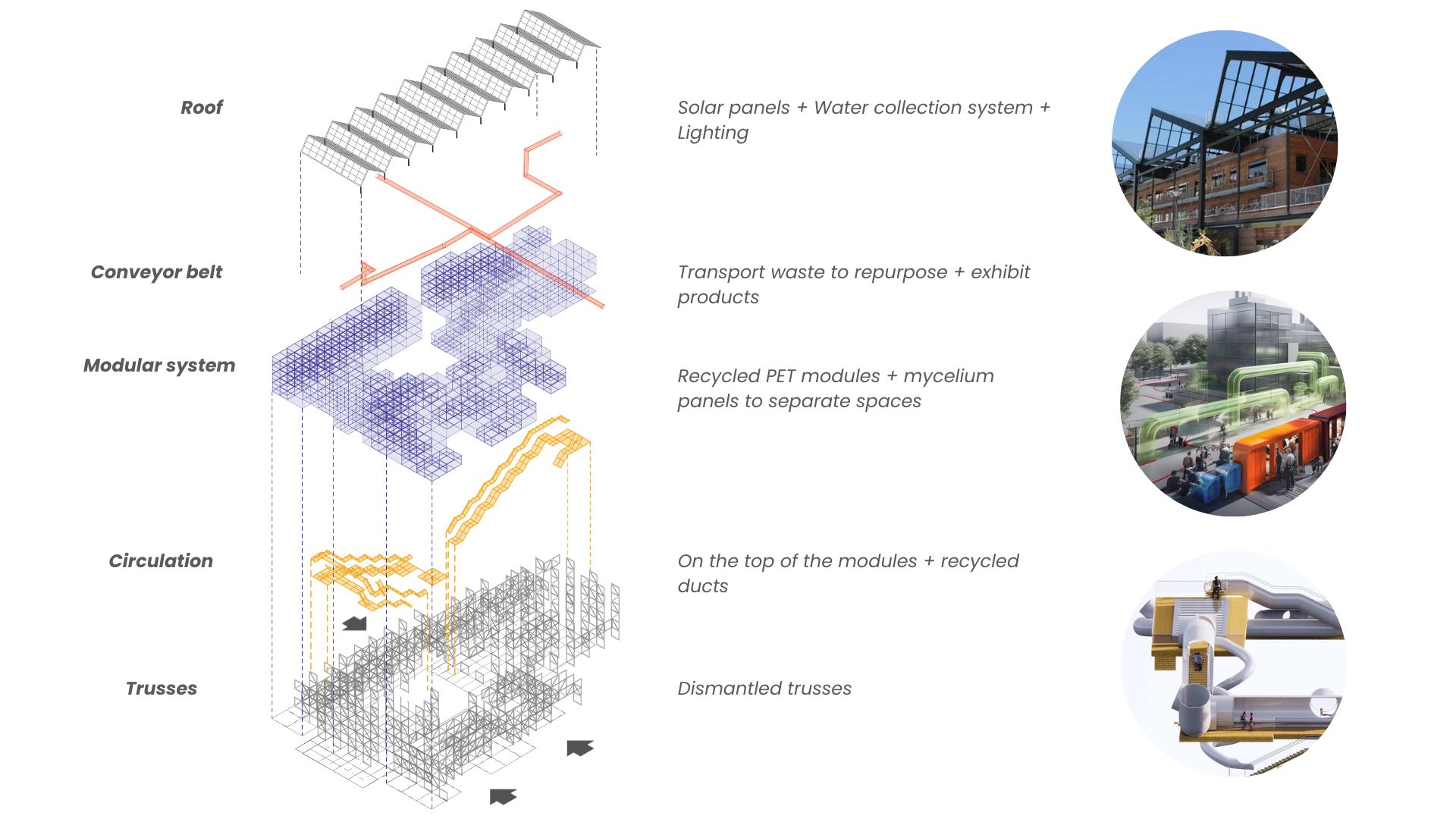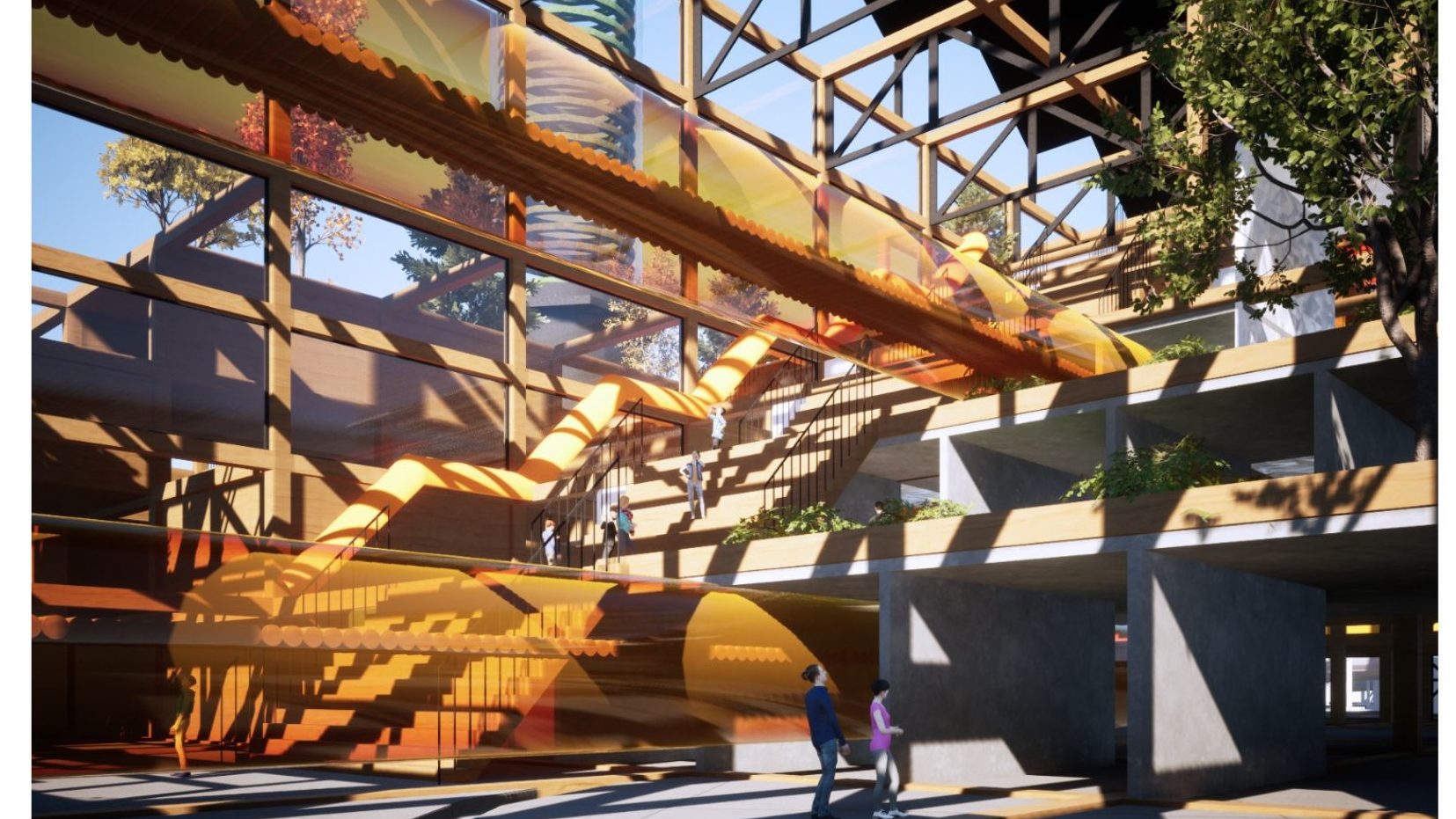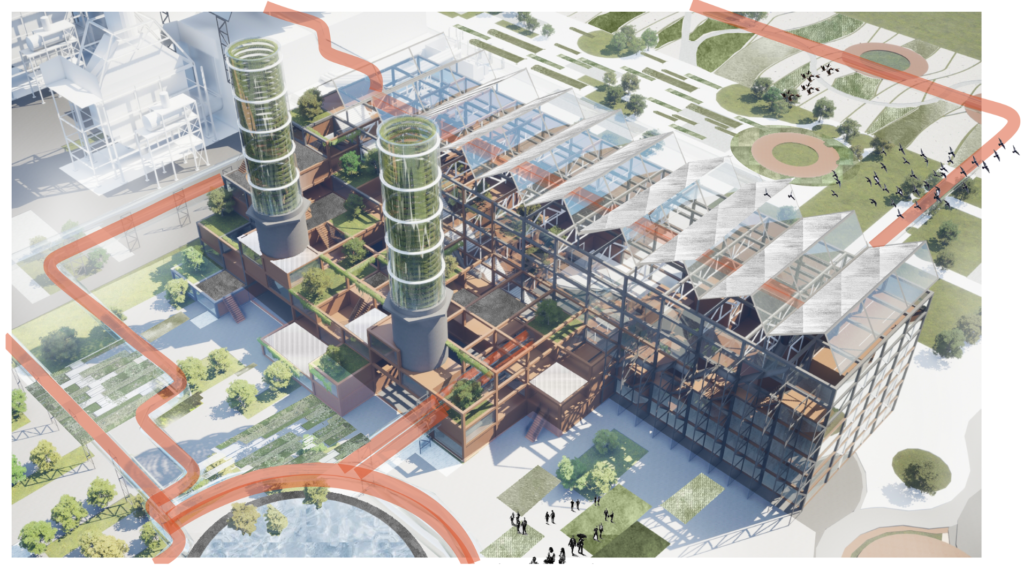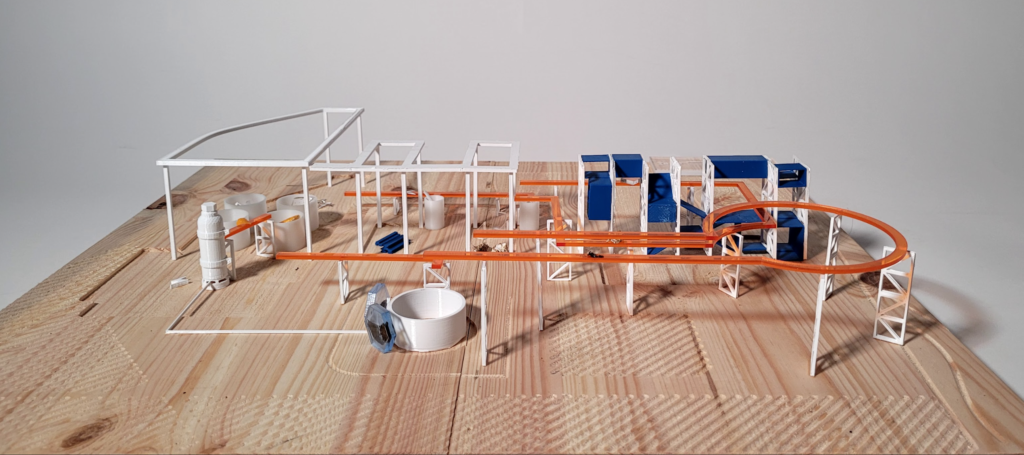”Turning waste Into communal wealth”.
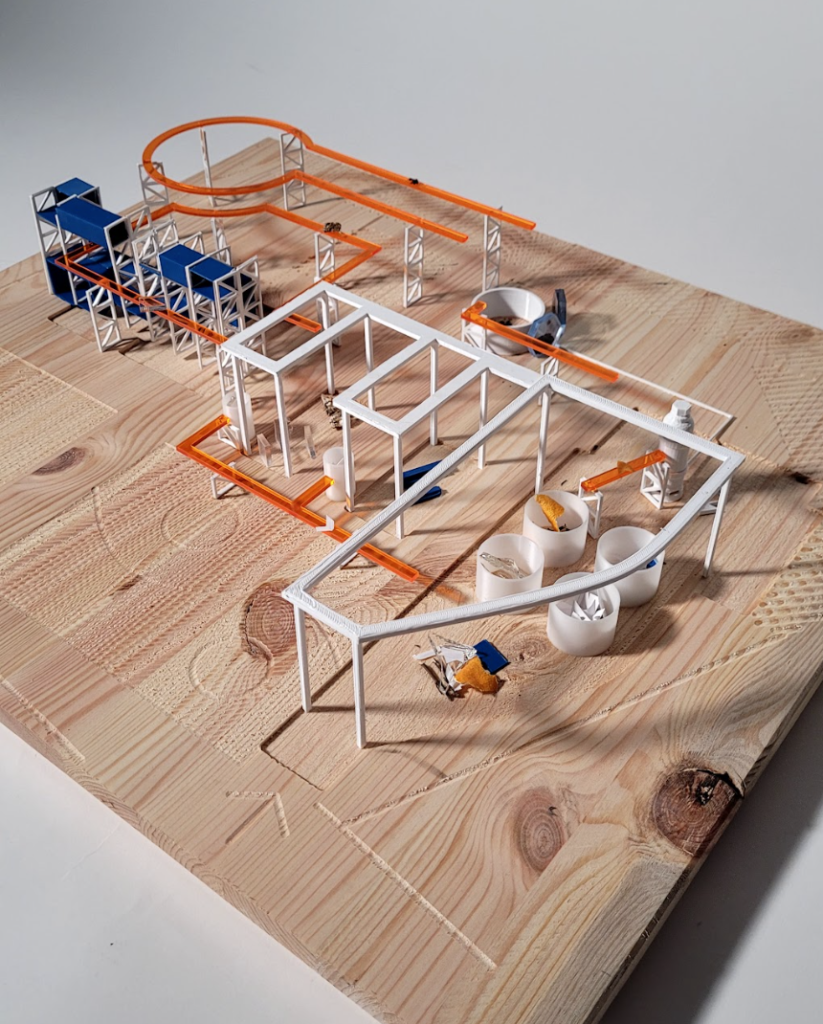
About the site
Sant Adria de Besos Power Station is currently working as a combined cycle thermoelectric plant located in Sant Adrià de Besòs, suburb of Barcelona.
Today, the plant burns a significant part of Barcelona and Badalona’s waste, and 85% of which is recyclable. Moreover the gases released when burning waste is a threat to human health and the environment. Currently, the site is surrounded by fences and walls, isolating the processes and spaces from the immediate context and the community.
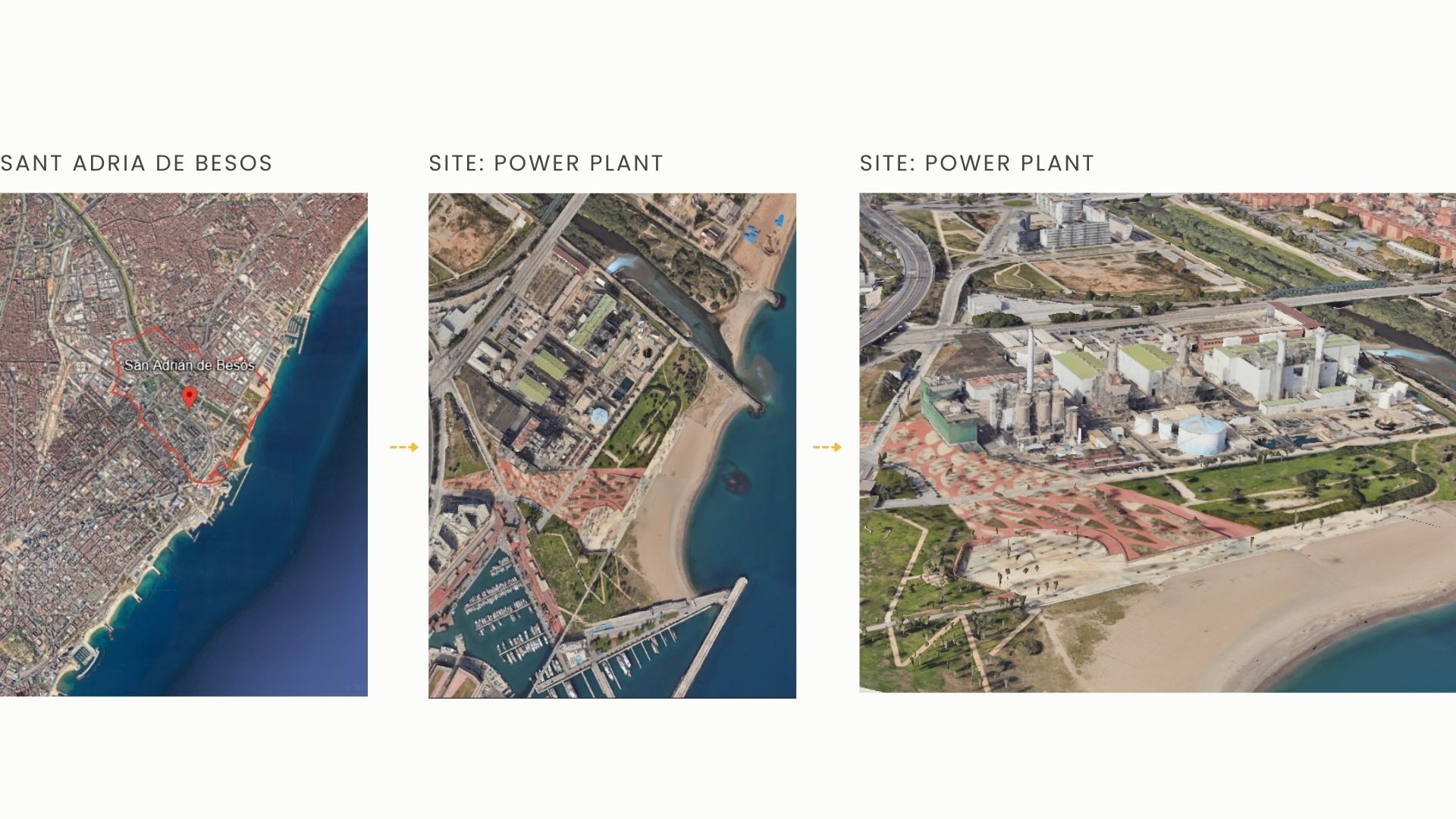
The neighborhood host Barcelona’s most dense, lower education and lower income communities with lack of opportunities and security. erials and to engage the community in these processes through education.
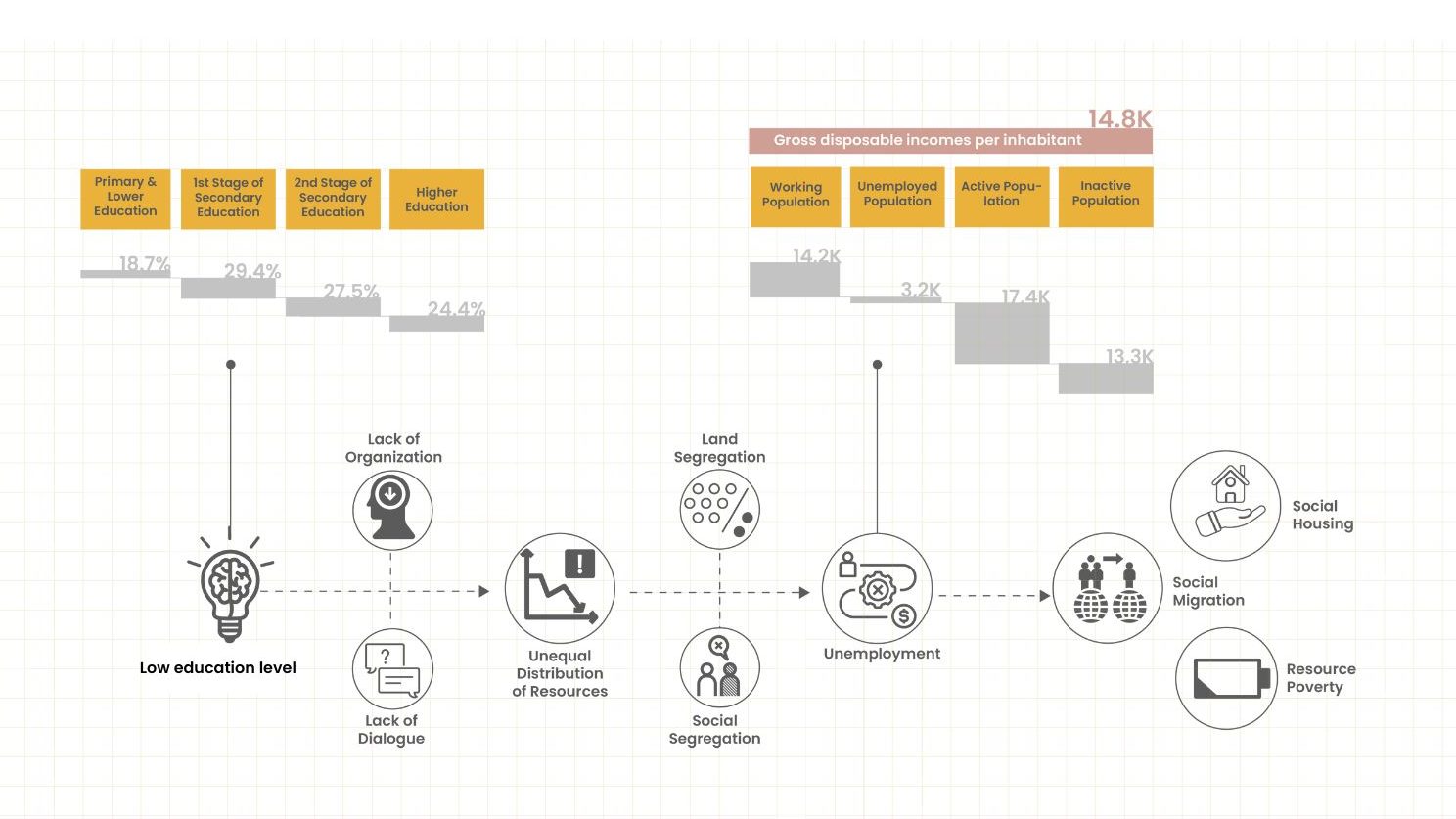
Therefore, ‘THE LIVING LAB’ proposes to repurpose the existing system in order to treat waste as an opportunity to massively produce Eco-friendly construction materials and to engage the community in these processes through education.
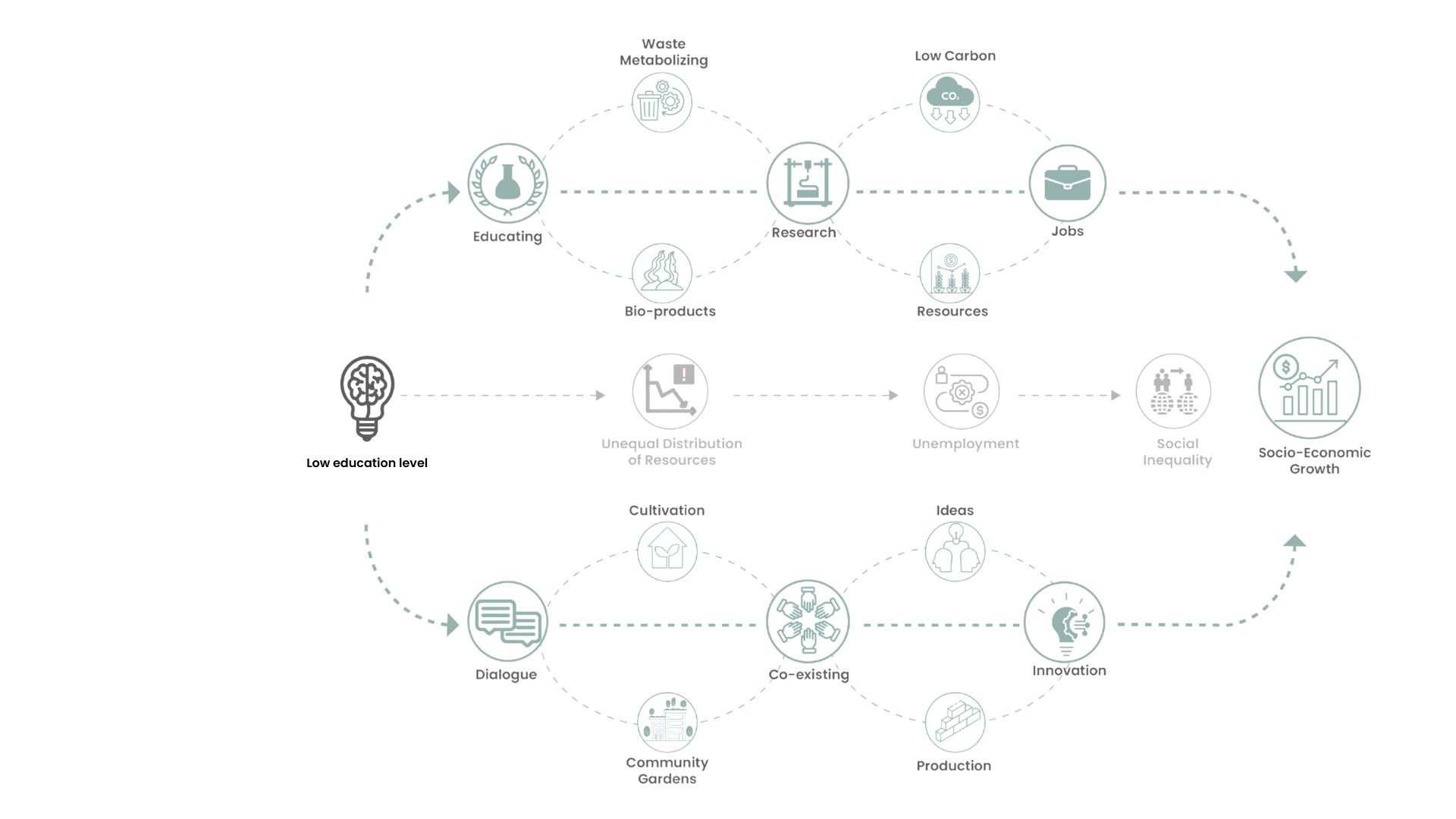
System proposal
The International Energy Agency (iea.org) projects that by 2050, 90% of electricity generated worldwide will come from renewable sources, with 70% coming from solar and wind – most of this coming from large scale solar and wind farms. With this, it is safe to assume that by 2050, the gas-burning power plant will not be operational in the outskirts of Barcelona given all the contamination it produces. Although the plant no longer works by burning waste, cities will continue to generate it, for this reason it is proposed to transform the site into a waste metabolizer that has as outputs; sustainable construction materials and elements.
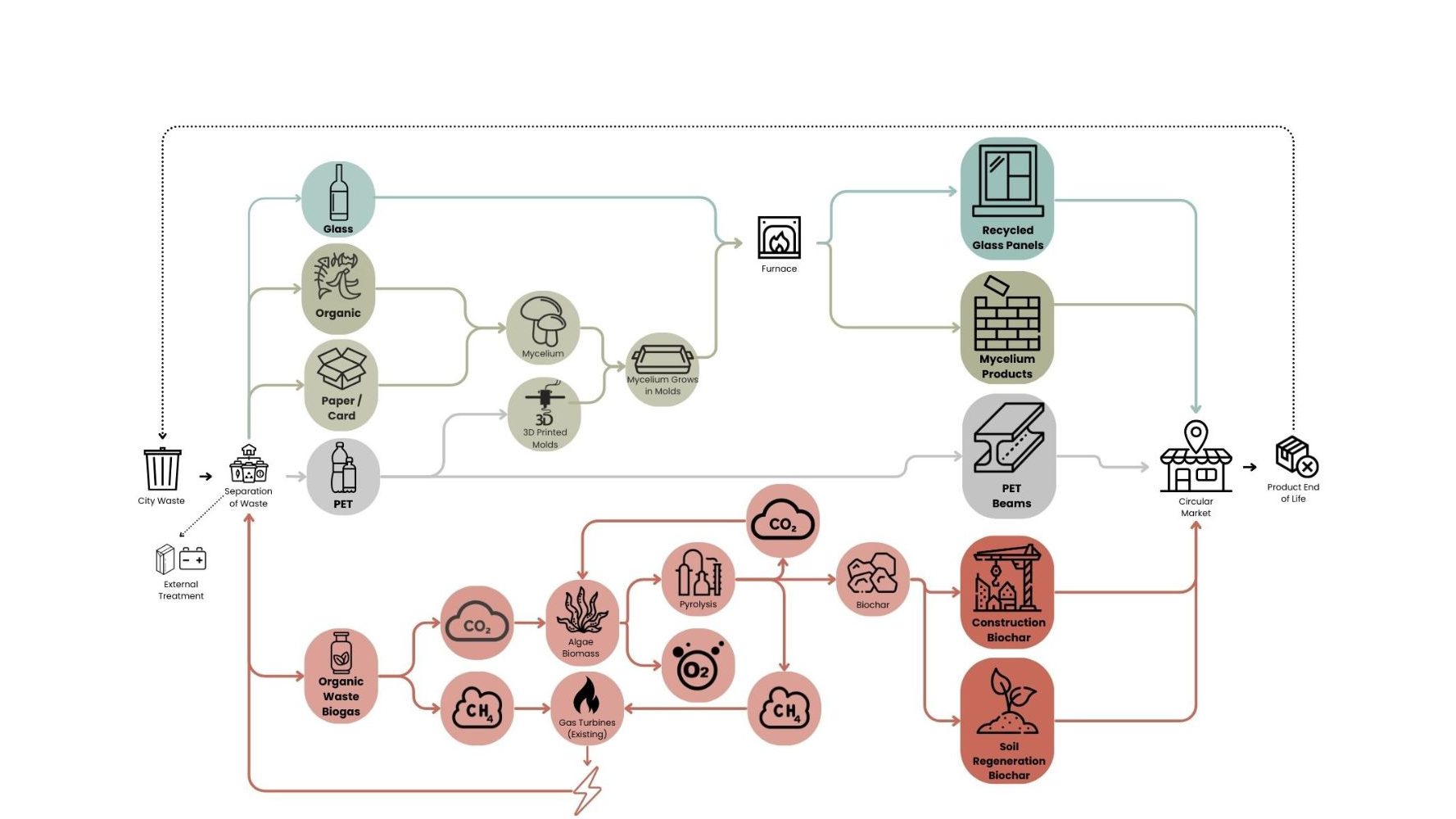
Transforming Barcelona’s waste into a catalyst for architectural innovation, this project pioneers a new paradigm that not only addresses the city’s socio-economic and ecological challenges but also reimagines waste as a valuable resource for sustainable development and community empowerment.
Masterplan proposal
At the urban scale, the new program is integrated, preserving as much as possible the existing infrastructure due to its historical values ??and its good condition. The urban morphology is preserved and public spaces are redesigned, connecting them with the green roofs that cross the entire site allowing people to get a little closer to the industrial waste treatment processes.
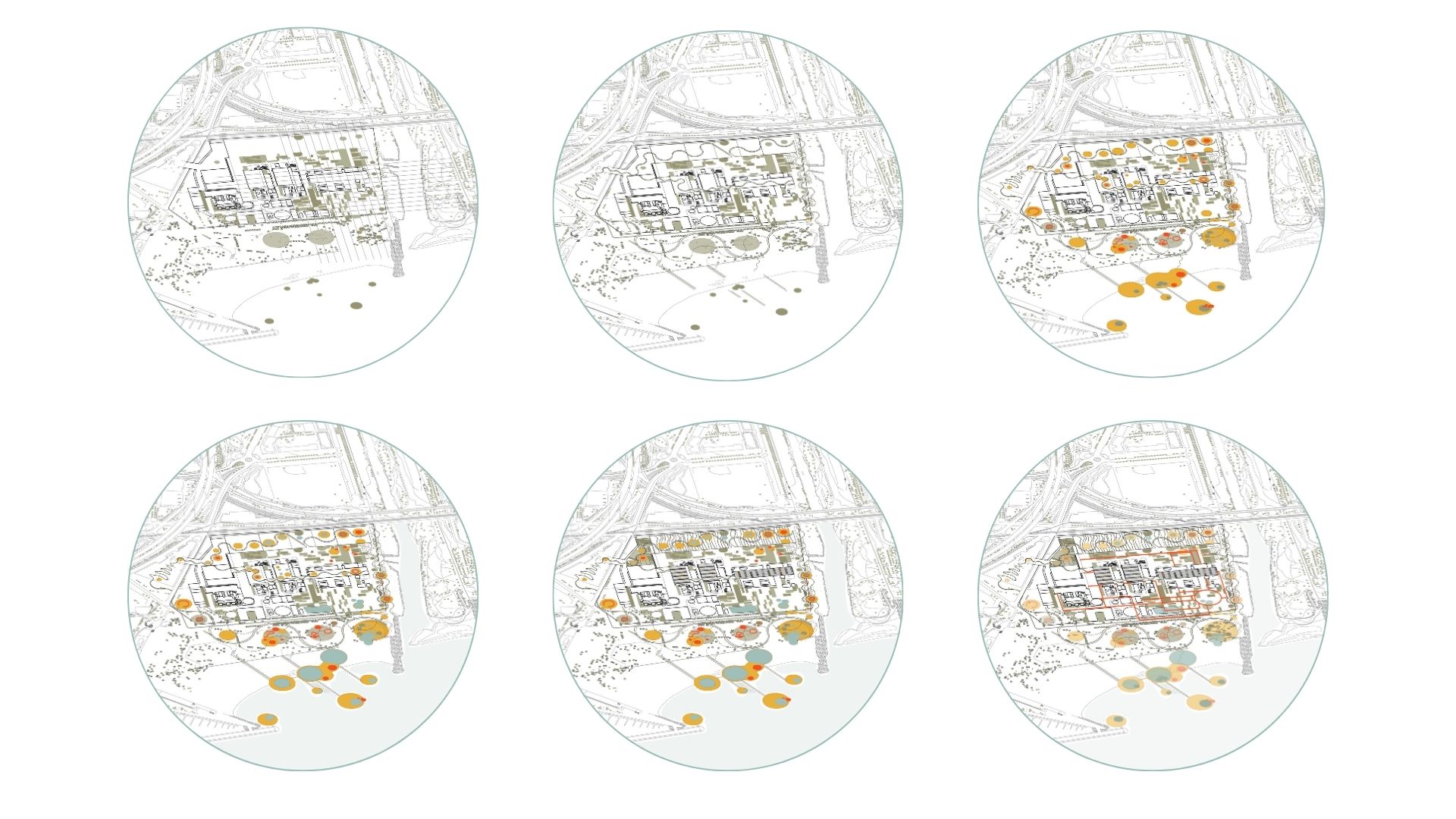
With the dismantled industrial elements, it is proposed to create urban furniture, pavilions and a series of metal elements with which the flow of people is controlled. It is of great importance to maintain the transparency of the processes, which is why the visibility of the users towards the inside of the industrial warehouses is facilitated. Likewise, a conveyor belt crosses the entire site, transporting raw materials to the laboratories, as well as finished products and materials to be exhibited everywhere.
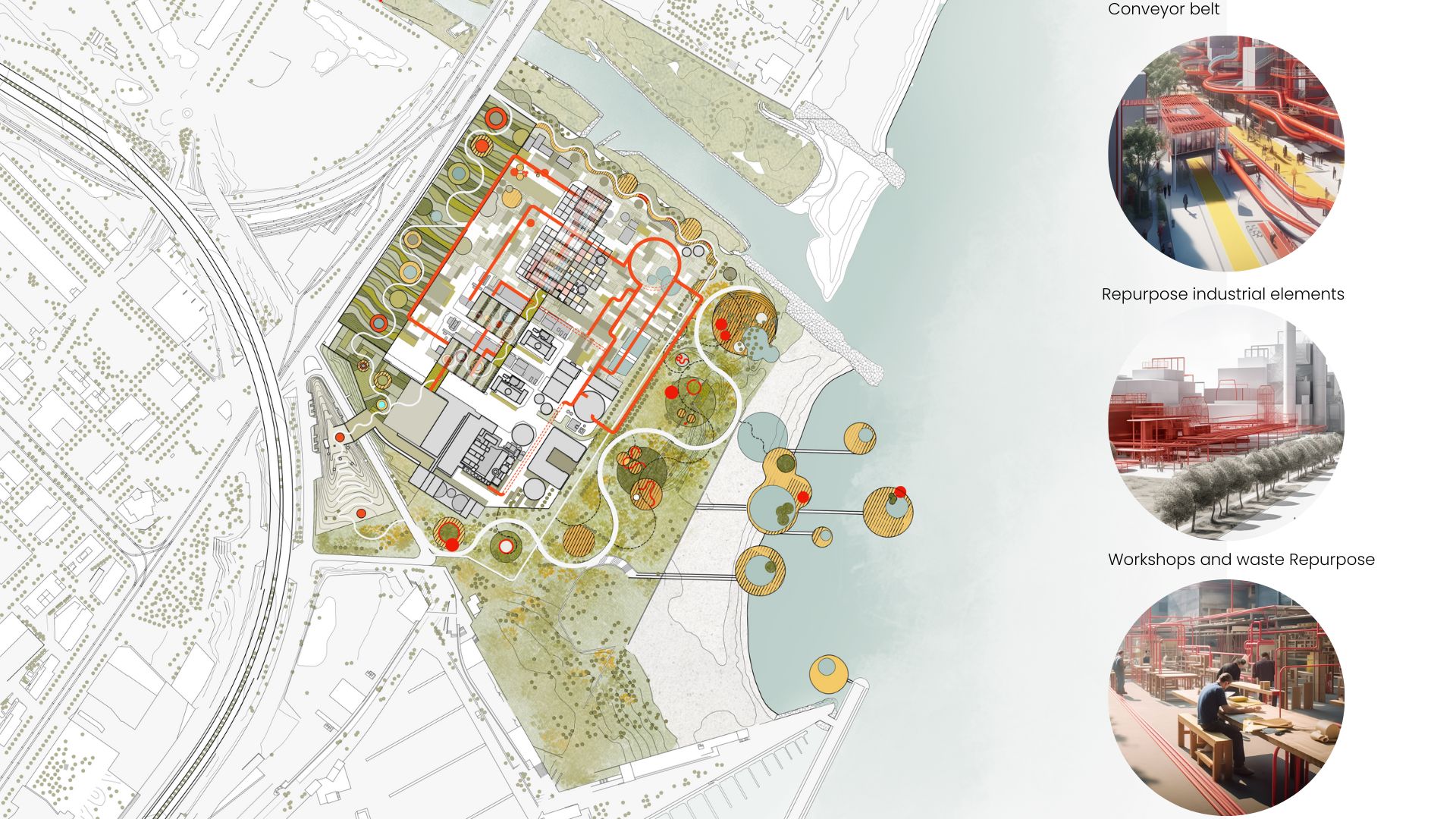
Selected area to develop
At the heart of our transformative vision for Sant Adria de Besos stands The Living Lab, an architectural marvel that merges sustainability and innovation. Designed as a multi-functional hub, this building is not just a structure but a living ecosystem, designed with eco-friendly materials produced on site by re-purposing waste. It’s transparent design exposes these elements to foster interaction and education. The Living Lab serves as a space for community engagement, education, and the incubation of sustainable practices.
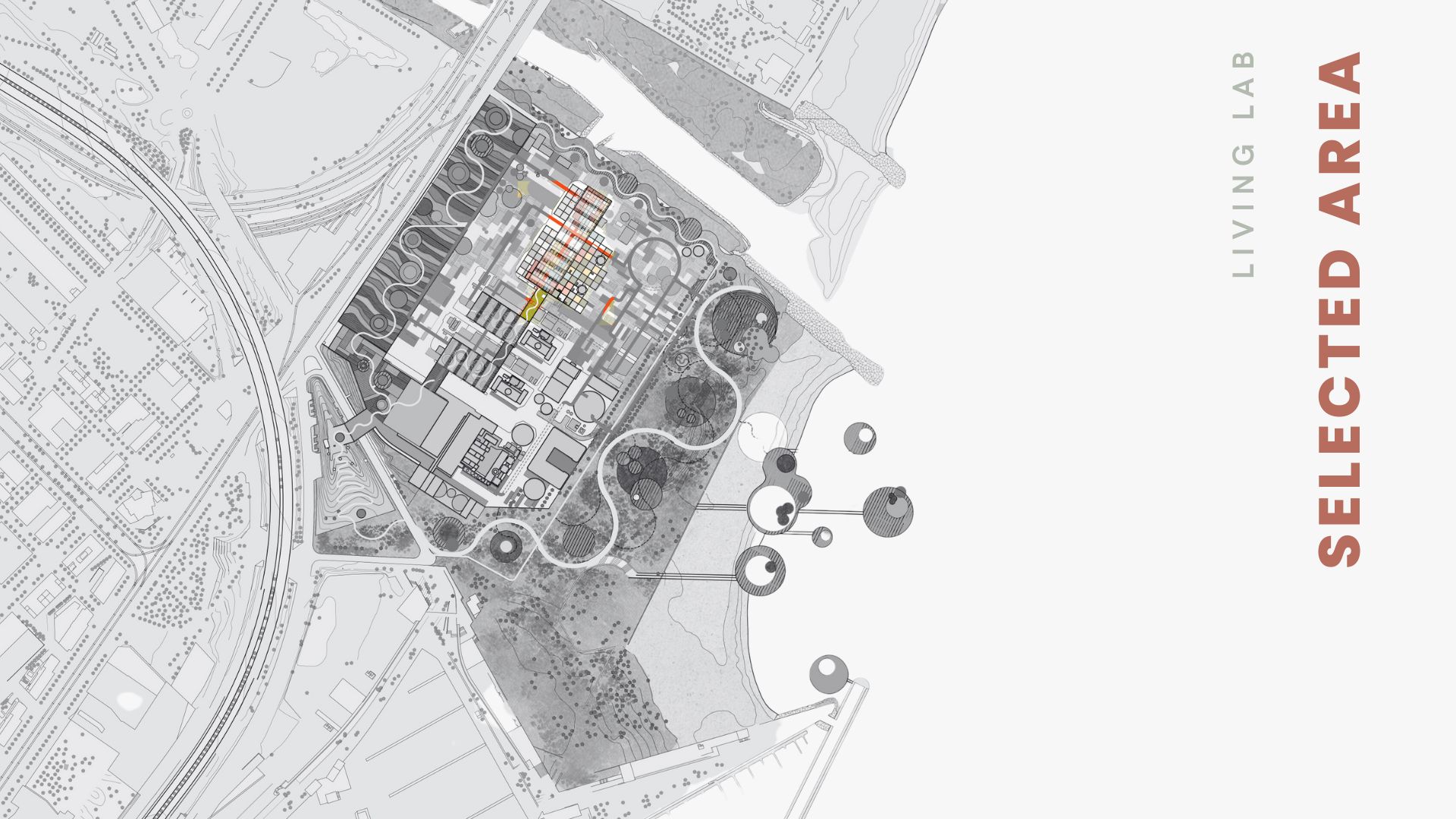
The Living Lab showcases a blend of algorithmic design and reuse. Dismantled elements like steel trusses and pipes are reconfigured into a structural grid, supporting diverse spaces crafted from PET pre-fabricated modules, mass timber, mycelium, and biochar.
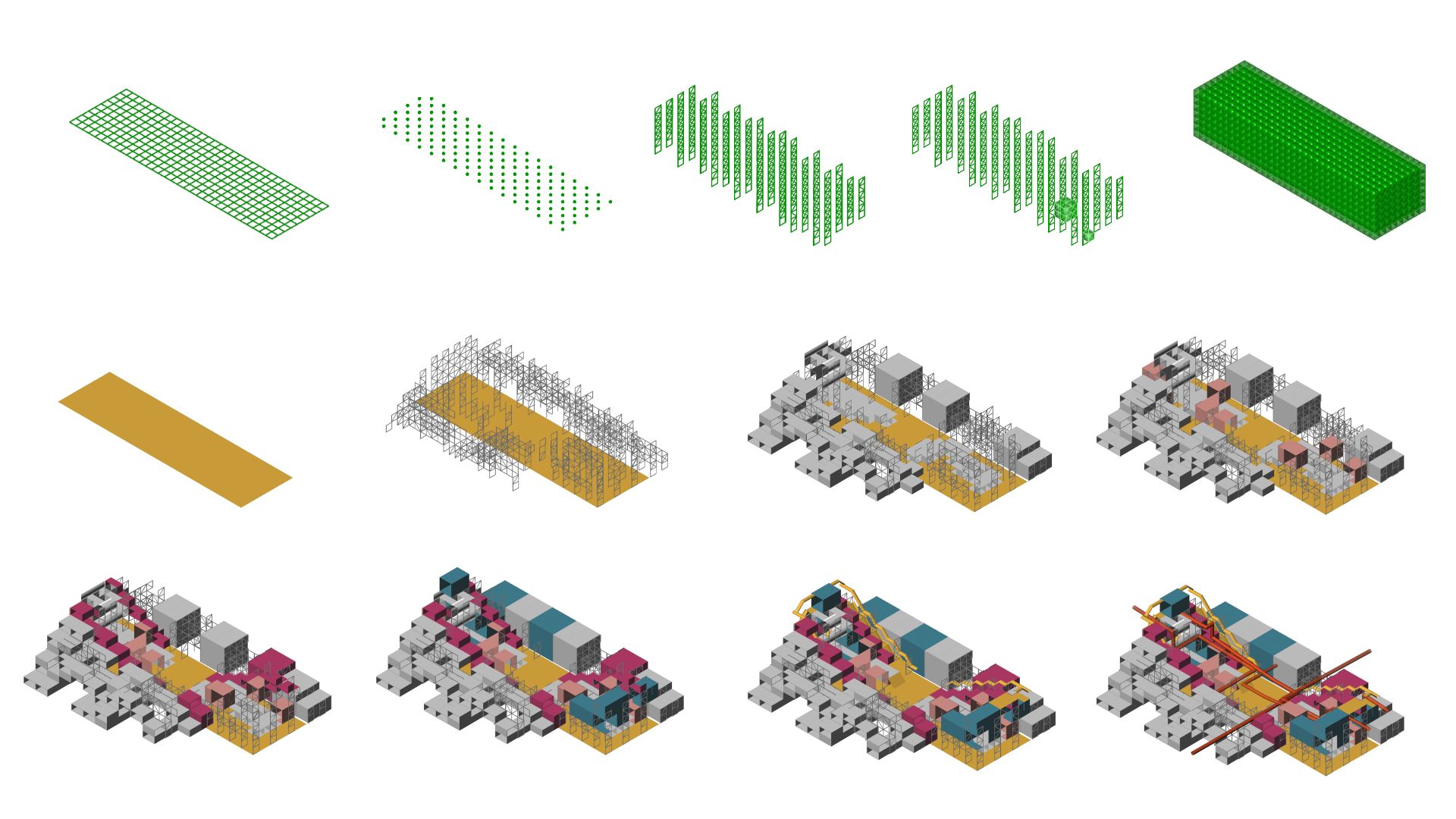
The main purpose was to expose the processes on-site using interactive conveyer belts throughout the building. These materials form functional zones ranging from macro to micro-spaces, each tailored for community engagement and waste repurpose objectives. Repurposed pipes elegantly structure the staircases, enhancing the building’s industrial aesthetic while emphasizing ecological responsibility.
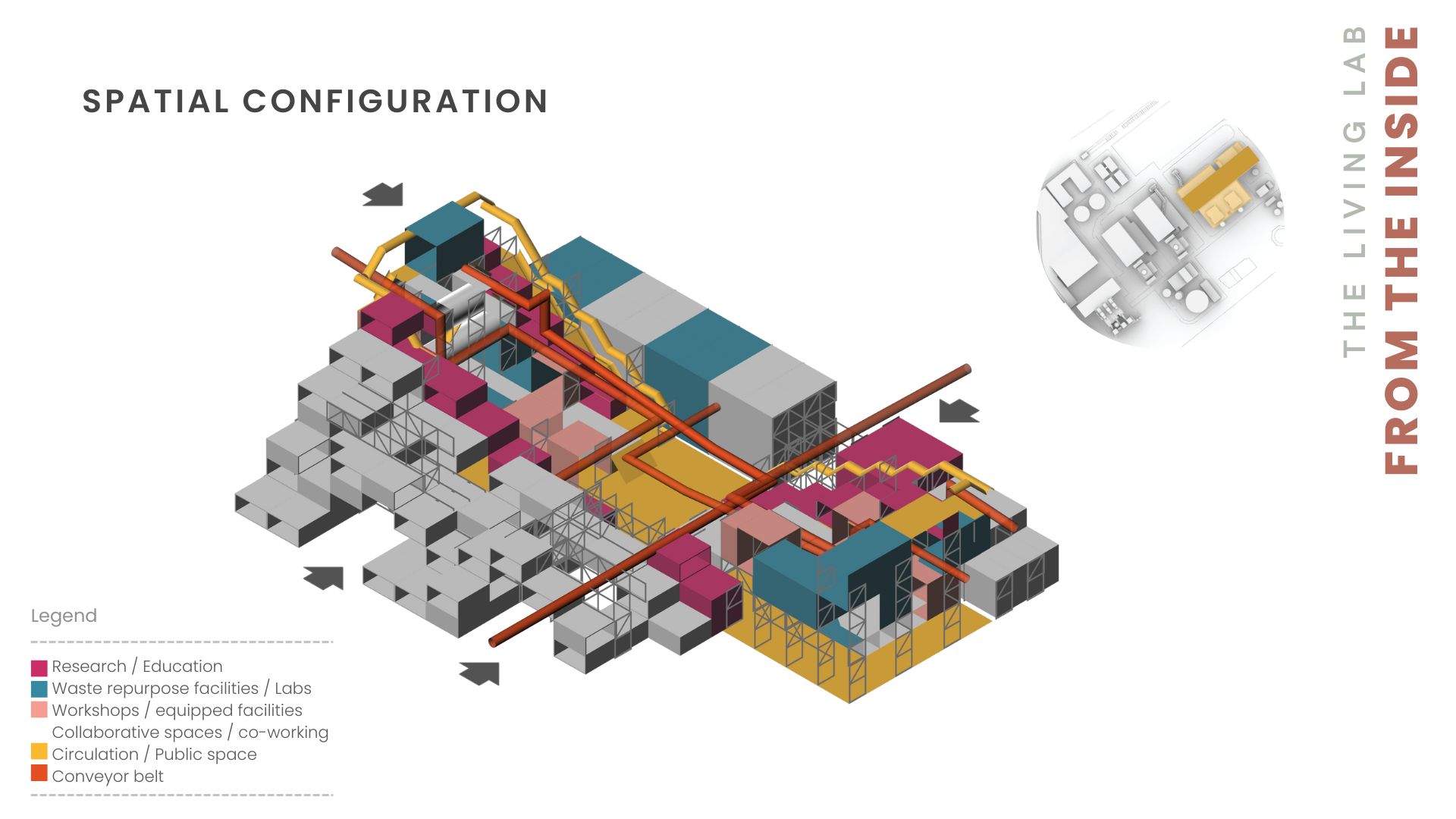
In other words, The Living Lab is the literal expression of the concept ”Waste is a human invention, we should shift our perpective of waste and see it instead as Raw Material that could be transformed”.
